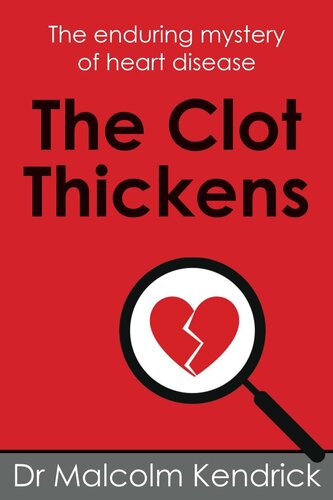پاتوفیزیولوژی پلاک آترواسکلروتیک انسانی ۲۰۱۱
Pathobiology of the Human Atherosclerotic Plaque 2011
دانلود کتاب پاتوفیزیولوژی پلاک آترواسکلروتیک انسانی ۲۰۱۱ (Pathobiology of the Human Atherosclerotic Plaque 2011) با لینک مستقیم و فرمت pdf (پی دی اف)
| نویسنده |
Seymour Glagov, Sheldon A. Schaffer, William P., III Newman |
|---|
| تعداد صفحهها |
923 |
|---|---|
| نوع فایل |
epub |
| حجم |
3 Mb |
| سال انتشار |
2011 |
89,000 تومان
معرفی کتاب پاتوفیزیولوژی پلاک آترواسکلروتیک انسانی ۲۰۱۱
سیمور گلاگف آخرین جلسه که منحصراً به غربالگری پلاک آترواسکلروتیک اختصاص داشت، 25 سال پیش در شیکاگو با حمایت مشترک شورای آترواسکلروز AHA و انجمن قلب شیکاگو برگزار شد. این روش ها متعاقباً در جلدی با عنوان “تکامل پلاک آترواسکلروتیک”، ویرایش شده توسط ریچارد جی جونز (1) منتشر شد. هر دو ضایعات تجربی و انسانی در نظر گرفته شدند و چندین رویکرد جدید تحریک آمیز برای اغتشاش مورد بحث قرار گرفتند. میکروسکوپ الکترونی به طور سیستماتیک برای مطالعه رگ های خونی در آن زمان استفاده شد، به طوری که جزئیات فراساختار، ترکیب سلولی دیواره شریان و ضایعات آترواسکلروتیک با جزئیات ارائه شد. در نتیجه این کاوش ها، بحث قابل توجهی درباره شواهد مورفولوژیکی وجود داشت که نشان می داد سلول اصلی درگیر در فرآیند آترواسکلروتیک نه فیبروبلاست و نه ماکروفاژ است، همانطور که فرض شده بود، بلکه یک سلول ماهیچه ای صاف است. به طور خاص، نتایج نشان داد که این سلول می تواند لیپیدها را ترکیب کرده و به سلول فوم تبدیل شود.



